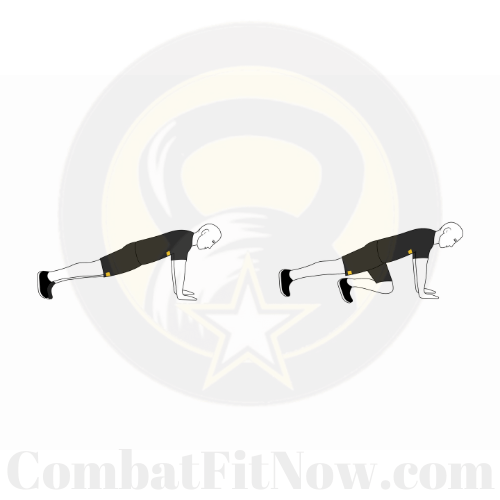Mountain climbers are a cardiovascular exercise that engages multiple muscle groups, including the core, legs, and shoulders. Here’s a step-by-step guide on how to perform mountain climbers correctly:
Video Instructions on How to Do a Mountain Climber
1. Starting Position:
- Begin in a plank position with your hands directly under your shoulders and your body forming a straight line from head to heels.
- Keep your core engaged to maintain a stable plank position.
2. Leg Movement:
- Lift your right foot off the floor and bring your knee toward your chest.
- As you return your right foot to the starting position, simultaneously lift your left foot off the floor and bring your left knee toward your chest.
- Alternate the movement of your legs in a “running” motion.
3. Tempo:
- Perform the exercise in a controlled and rhythmic manner.
- Aim for a brisk pace to elevate your heart rate and increase the intensity of the workout.
4. Core Engagement:
- Keep your core tight throughout the exercise to stabilize your body.
- Avoid sagging or raising your hips; maintain a straight line from head to heels.
5. Breathing:
- Breathe steadily and avoid holding your breath. Inhale and exhale in a natural rhythm as you perform the movement.
6. Duration:
- Beginners may start with 30 seconds to 1 minute of mountain climbers.
- As you become more accustomed to the exercise, you can gradually increase the duration.
7. Common Mistakes to Avoid:
- Avoid bouncing or jerking movements. Keep the motion controlled.
- Maintain proper plank form; don’t let your hips sag or lift too high.
- Ensure your shoulders are directly over your wrists to avoid wrist strain.
8. Modifications:
- If you’re a beginner or have joint concerns, you can perform mountain climbers at a slower pace or with your hands elevated on a bench or step.
9. Warm-up and Cool Down:
- Warm up your body with light cardio before starting mountain climbers.
- Incorporate a cool-down routine, including stretching, after completing the exercise.
10. Frequency:
- Include mountain climbers as part of a comprehensive workout routine, incorporating both cardiovascular and strength training exercises.
Remember to listen to your body, and if you experience any pain beyond normal muscle fatigue, it’s advisable to consult with a fitness professional or healthcare provider.



